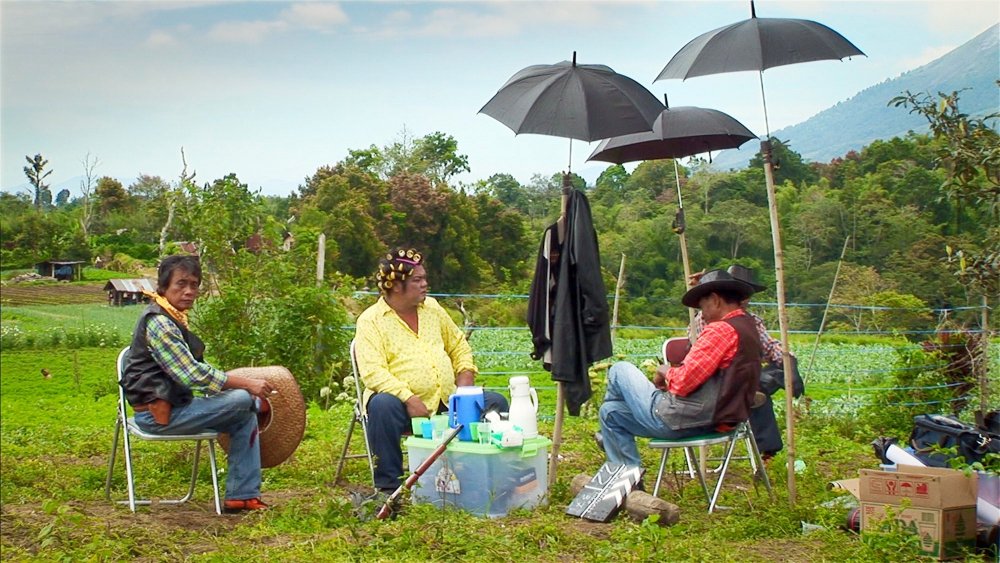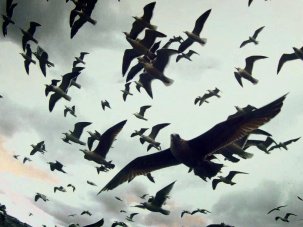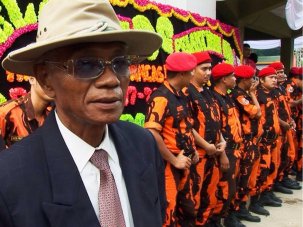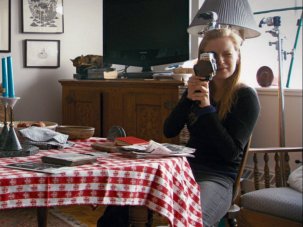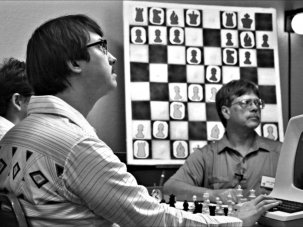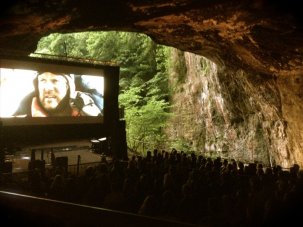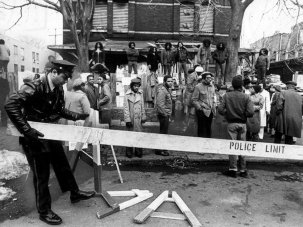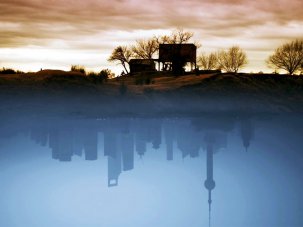This was the year documentaries forced their way to the forefront of the critical conversation, the year audiences and gatekeepers seemed to step cautiously toward the idea that nonfiction films can be as complex, as artful and as exciting as their completely scripted counterparts.
Led by my top film of last year, Leviathan, this year’s The Act of Killing and the widely loved Stories We Tell, nonfiction cinema in 2013 found its moment with three very different, equally resonant films that had major theatrical runs. The chatter about hybrid films (or chimeras, depending on your preference) – movies that play with boundaries between fiction and nonfiction – already seemed irrelevant when the year’s highly praised (and almost highly attended) trinity were exhilarating audiences across the world. If a cinematic epoch is defined not by theoretical constructs but by the presence of great movies and audiences that are hungry for them, then this is the year we can definitively say we are living in a Golden Age of Nonfiction.
2013 was the year film critic Scott Tobias told documentaries to grow up, then nine months later praised the freest and best films for formal innovation and “finding truths only the camera can reveal.” A movie I can’t wait to see, Gianfranco Rosi’s Sacro GRA, became the first nonfiction film to win the Golden Lion at Venice. Documentary film festivals continued to be the incubators for a movement, staging events like the one-time only screening of the Ross Brothers’ epic River at Hot Docs or the surprise action painting Cutie and the Boxer’s Ushio Shinohara made after a screening at True/False. This was the year we were called the “cool kids”, and yeah, that might be silly, but the palpable excitement was real.
Still, the backlash in some circles against The Act of Killing (cf Merin, Rayns, Rosenbaum) suggests the old idea that documentaries should behave like journalism is quite resilient. Joshua Oppenheimer (and his team of collaborators) made a legitimately dangerous film, one that challenges ways of seeing and standards of representation unlike any film ever made. It’s a piece of art that interacts with a brutally complicated reality, but because it doesn’t attempt to simplify that reality, and in fact allows its own ambition as a film to be refracted in the dark prism of its star Anwar Congo’s cinematic dreams, the film might be too frisky and too precarious for the careful set.
The best makers of the best nonfiction this year embraced this perilous edge. The documentary form is one of the freest in cinema, while also being gloriously beholden to the ineffable weight of the real world and the delicate needs of real lives. This tension between limitless formal possibility and necessary moral constraint gives nonfiction a rare power and the most exciting filmmakers dutifully exploit this.
Sure, way too many films that found significant distribution this year forgot to have an aesthetic when writing their successful loglines to issue-obsessed grant providers, but the sheer amount of stirring, innovative, relevant work boggles the mind. We are a generation making movies that happen to be documentaries. These are acts of seeing the world for what it is: endlessly complicated, painfully funny, excruciatingly real.
One year ago I began writing to try to fill what I saw as a void in critical thinking on nonfiction. I am a filmmaker first, and my focus continues to be on getting better criticism, not nicer reviews. A year later, things are certainly improved, but we still have a long way to go.
Sure, A.O. Scott only named five documentaries in his year-end wrap-up (which created some fun little controversy), but far more upsetting was the New York Times giving a Critics’ Pick to the aesthetically confused Blackfish, a film that made good at the box office and maybe even changed the world (as documentaries often aspire to do), but could hardly be considered a decent movie. It’s such a hodgepodge of co-opted styles that it never settles down to make coherent its obviously interesting story. Instead, like many of the worst documentaries of the year, it’s edited out of frantic fear that it might lose its audience (and their money). Hey that doesn’t matter because it was ‘important’ right? At least everyone agreed Salinger was a cynical attempt at a ‘docbuster’ and ultimately a piece of crappy infotainment at best.
Mainstream critics still need to step up and treat nonfiction with respect when the movies deserve attention and mercilessly when they stink. But as 2013 comes to a close, I have to admit I’m pretty optimistic. There are plenty of great writers out there and many great films demanding their acute attention. This might be the year we look back on as the Year the Documentary Couldn’t be Denied.
Now, to get this out of the way, my list plays by no qualifying premiere rules. Some of these aren’t even movies. This is just a countdown of what I consider the best of the year in cinematic nonfiction.
25. ’Til Madness Do Us Part
(Feng ai) Wang Bing, Hong Kong
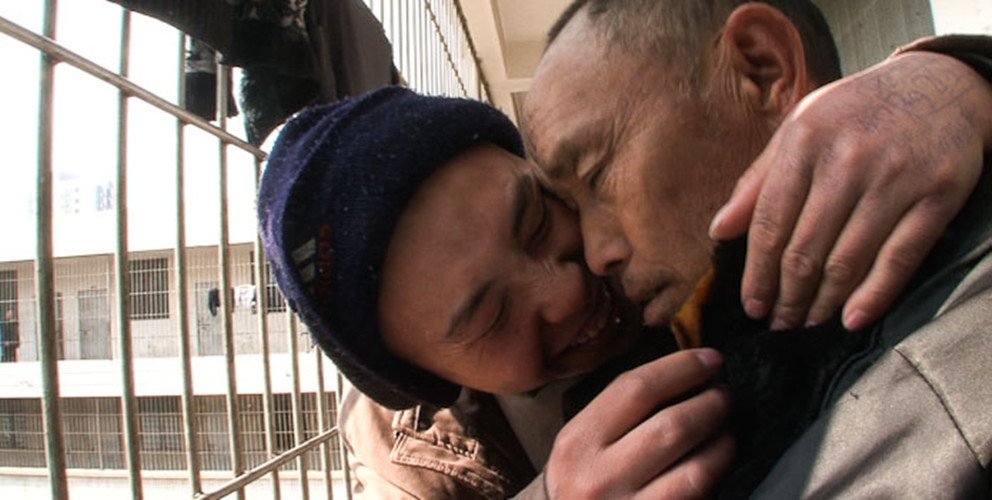
’Til Madness Do Us Part
To call one of Chinese master documentarian Wang Bing’s films exhausting, tedious, harrowing and mesmerising is perhaps redundant since that’s just what he does, but his latest is still a work of immense greatness. A nearly four-hour submersion into a Chinese mainland mental hospital, the film is an extended act of rage, dutifully exposing an invisible class of people. Shot almost entirely in the dark corridors and miserable rooms of the institution, this is an act of political protest against a deeply dehumanising system. The camera behaves like a patient, the unseen are named and the endurance test creates a powerful and unshakable empathy that must be experienced.
24. Computer Chess
Andrew Bujalski, USA

Computer Chess (2013)
Bujalski’s 1980s period comedy about the start of our current technological age turns from costume story into an act of hybrid documentary cinema by using the old video cameras that would have actually filmed the chess tournament and side events that make up the story, creating images that behave self-referentially. The whole idea of documentation then becomes part of the construct and the layering brings to the forefront ideas of truth and falseness that are almost always the subtext of even the most straightforward documentaries. Or maybe it’s just more fun to imagine the whole thing was real.
23. Our Nixon
Penny Lane, USA
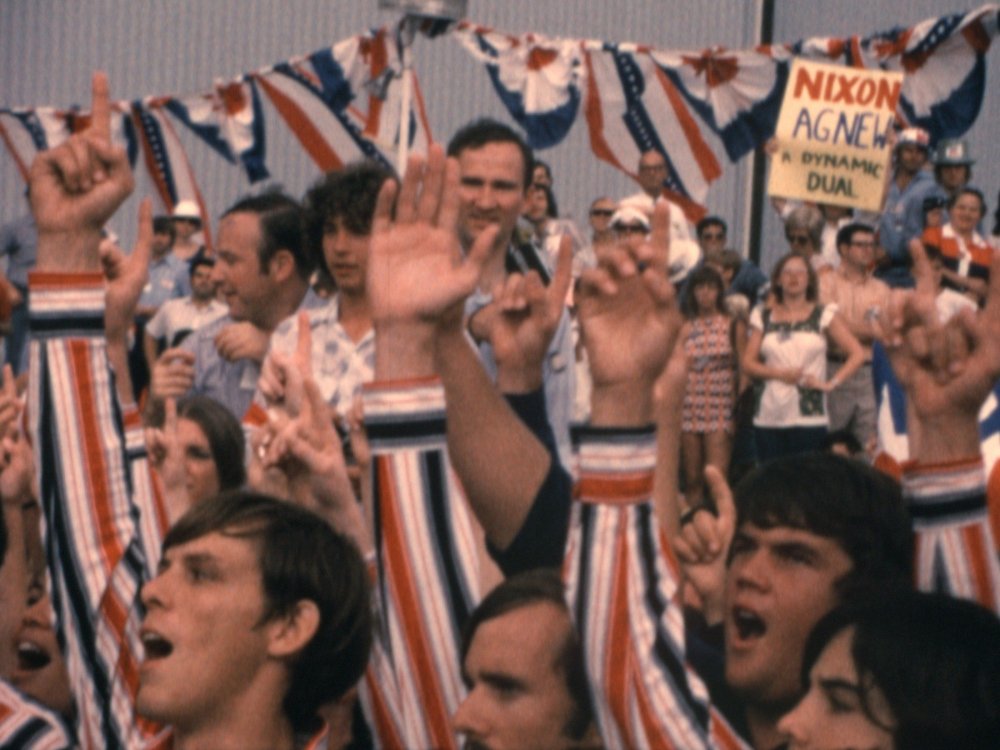
Our Nixon
Using previously unseen home movies from Richard Nixon’s top aides, director Lane and producer Brian Frye craft a subjective, impressionistic study of tragic men before their fall. The film is entirely constructed out of archival material and the editing was clearly guided by the filmmakers following the strands that most intrigued them. What emerges is an idiosyncratic and highly human portrait of the male brain at its most power-intoxicated and delusional.
22. Tina Delivers a Goat
Joe Callander, USA
Declaration of War
Dustin Guy Defa, USA
Lost Village: the Dark Side
Manuel Jimenez, Spain
A Story for the Modlins
Sergio Oksman, Spain
Sometimes flawless nonfiction can be achieved in less time and these are some of the most exemplary short films of an amazing year. Declaration of War [watch it here] rides one idea to its hauntingly logical end, Lost Village: The Dark Side holds its mystery until the perfect moment of revelation and A Story for the Modlins effortlessly outdoes Room 237 and creates a truly strange mystery, which may or may not be real. Meanwhile, Tina Delivers a Goat [watch it here] is Land Without Bread in less than two minutes and just might be the most perfect film of 2013.
21. Let the Fire Burn
Jason Osder, USA

Let the Fire Burn
Jason Osder’s debut feature uses the new technique of “archival verité” to bring into the present tense the painful history of the radical group MOVE’s fateful battles with Philadelphia officials that culminated in a deadly fire in 1985. The slow-burn portrait of bureaucratic mismanagement and misunderstanding that lead directly to tragedy is as intense and palpable as it would be if we were watching in real time.
20. An Oversimplification of Her Beauty
Terence Nance, USA

An Oversimplification of Her Beauty
Imaginative and lively, Terence Nance’s semi-scripted, semi-animated act of self-effacement / self-mythology is daring and totally enthralling, heralding a bright new cinematic voice. Avoiding the twee or depressive, the film tears itself apart while we watch and never takes its own breakneck invention too seriously. Rarely is self-awareness so free and beguiling.
19. The Kill Team
Dan Krauss, USA
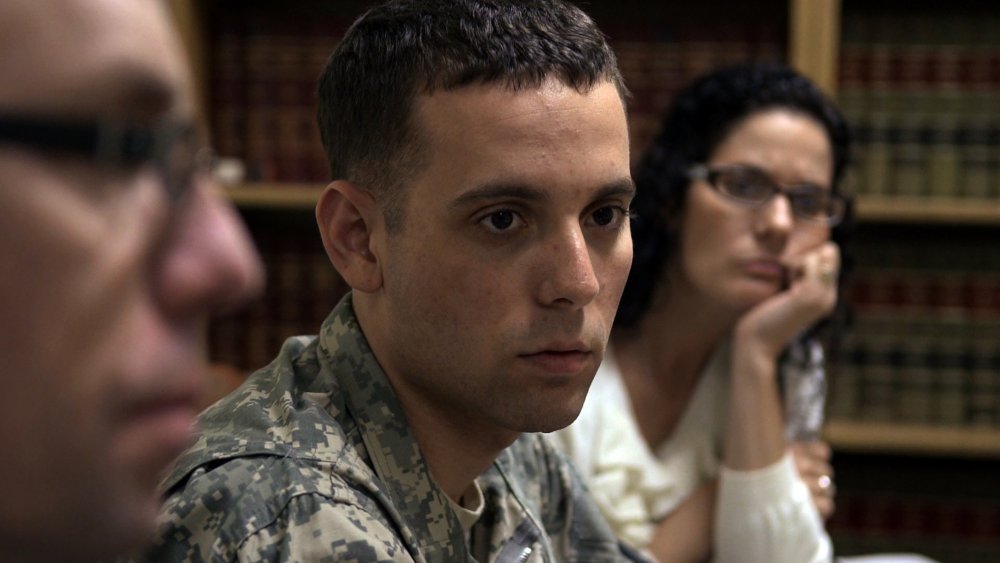
The Kill Team
A war documentary with interviews and a big logline (uncovering the truth behind the infamous Afghanistan Kill Team in the US military that murdered several innocent civilians) that focuses more on faces, glances and revealing gestures than it does on the issues. Gripping, morally ambiguous and stunning, this is a case study in how to handle an important topic in a documentary.
18. Bad Grandpa
Jeff Tremaine, USA
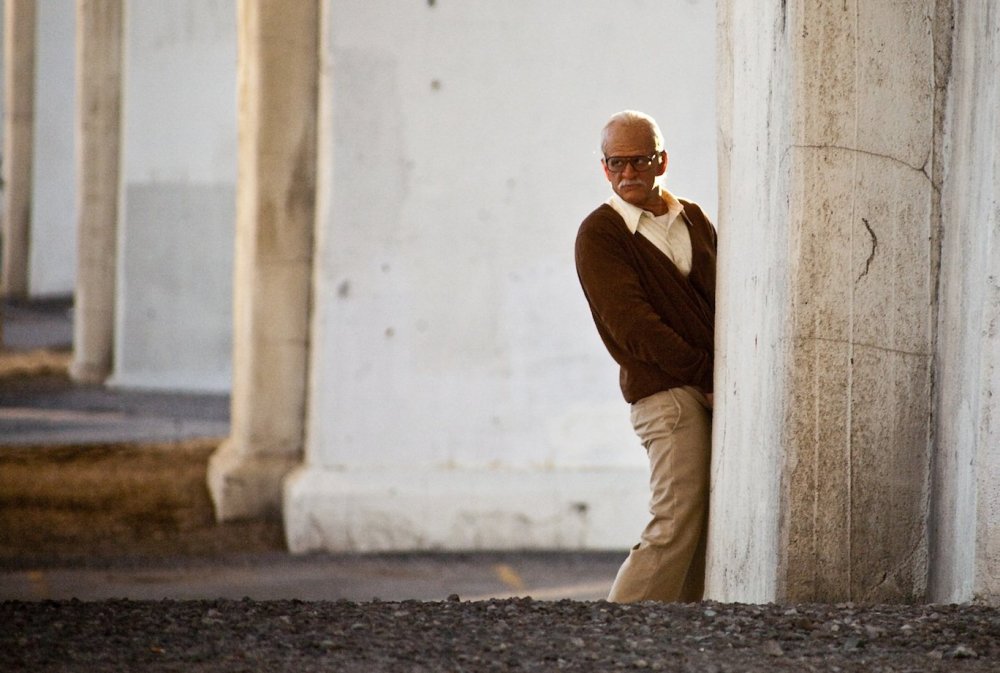
Bad Grandpa
Johnny Knoxville is one of our greatest artists. Enough said.
17. YouTube cinema
The world
While the overrated Room 237 was trying to class up YouTube, the real thing (and the internet, generally) was providing us with some of the most amazing observational moments of the year. Highlights include the Russian meteor as seen from a dashboard, the frightening explosion of a fertiliser plant in Texas and the immersive, real-time dramas of the Wendy Davis filibuster and the search for the Boston Marathon bombers.
16. The Expedition to the End of the World
(Ekspeditionen til verdens ende) Daniel Dencik, Denmark / Sweden / Greenland

Expedition to the End of the World
The most fun I’ve had at the movies this year besides Gravity. Daniel Dencik travels to the arctic with a collection of thinkers on a giant boat and hilarity ensues. Thoughtful, striking, visually sumptuous and riotous (and featuring one of the best music cues of the year and maybe the greatest visual gag in documentary history), this is a film about the Earth we’re probably destroying. But man, that really makes you think.
15. Cutie and the Boxer
Zachary Heinzerling, USA

Cutie and the Boxer
Big-hearted but surprisingly tough-willed, Zachary Heinzerling’s debut is character-driven portraiture at its finest, always aware of the exploitable mysteries of observational cinema and the power of restraint. The film works best as a clear-eyed love story and a depiction of the lives of artists. This is lovely, delicate filmmaking.
14. At Berkeley
Fred Wiseman, USA

At Berkeley
Direct cinema icon Fred Wiseman’s deep dive into the teetering titular academic institution is overlong and surprisingly devoid of his familiar flair for gripping images, but it’s still so full of ideas and surprising moments of drama that it can’t be denied. Half the fun is watching the master working through his opinions about education, the American dream and generational tensions on the left.
13. Sickfuckpeople
Rechinsky Juri, Ukraine / Austria
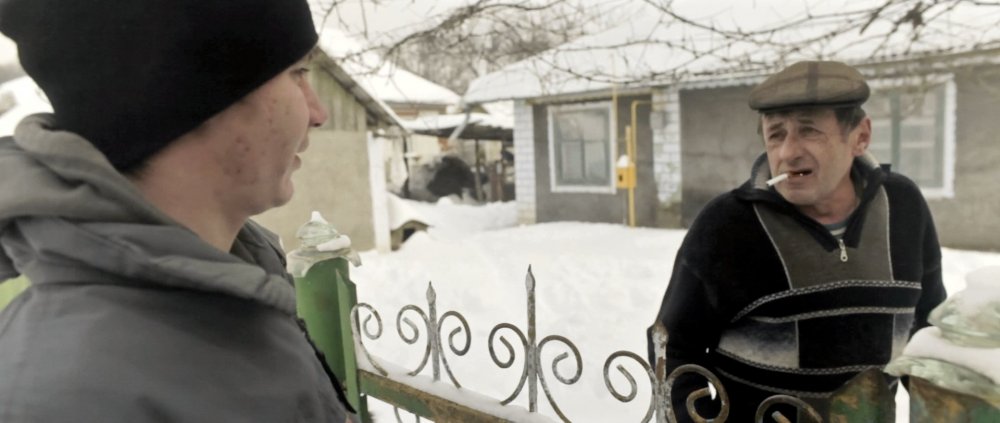
Sickfuckpeople
This desperately wrenching triptych premiered at Hot Docs and was scarcely seen after, but it deserves to be considered one of the best films of the year. Utterly miserable and uncomfortable, the film transforms from a kind of Ukrainian Kids to a sad search for home and then to a painful portrayal of addiction and loss. But there is great dignity here and startling images, all leading to a truly transcendent ending that gives the sense of fought-for hope.
12. Big Men
Rachel Boyton, UK / Denmark / USA

Big Men
Rachel Boyton makes complex, character-based films about huge issues over multiple continents with several moving points of contact. Big Men is a multi-faceted nonfiction thriller about oil, geo-political intrigue and personal rises and falls that synthesises its immense ideas into a taut narrative. It is a feat of spectacular filmmaking which always foregrounds meaningful observations over grand gestures.
11. Caucus
AJ Schnack, USA
The Square
(Al Midan) Jehane Noujaim, Egypt / USA
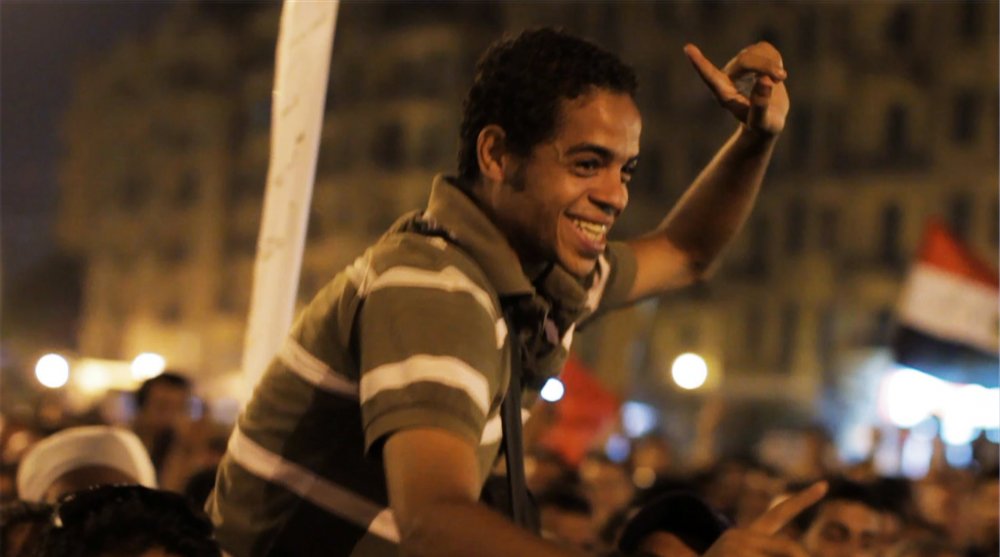
The Square
Winter Go Away
(Zima, ukhodi!) Rechinsky Juri, Ukraine / Austria
These are three very different films about political theatre in the immediate now, each using intimate cinema to tell larger truths about our tumultuous world. In Askold Kurov and collaborators’ Winter Go Away, the graduates of the Marina Razbezhkina and Mikhail Ugarov’s Documentary Filmmaking and Theatre School in Russia take to the streets in the run-up to an election where Vladimir Putin is trying to retake the presidency. A wry sense of humour permeates this portrait of the frustrating political process in St. Petersburg, as strange and entertaining characters like Mikhail Prokhorov and Pussy Riot make appearances. Still, the post-election violence captured on camera is disturbing and truly alarming.
Meanwhile, Jehane Noujaim’s The Square is an epic and engaging telling of the revolutionary events in Egypt over the past two years, told in jittery, breathtaking close up. Like a modern, character-driven version of The Battle of Chile, the film successfully orients the viewer into understanding the heartbreaking, on-the-ground political complexities. It may be a bit overlong, sometimes depending too much on mood music, but this is essential filmmaking. It also has one of the best scenes of the year, a direct homage to Jean-Luc Godard’s eternal “children of Marx and Coca-Cola” maxim.
Back in the US, the political theatre is decidedly more comedic with Caucus. The insane battle for the Republican nomination for the presidency is kicked off in small towns across Iowa, while AJ Schnack and his collaborators capture every cringe-worthy moment of performance. All three films reveal the obsession with image making behind political realities, giving us sometimes dramatic and sometimes hilarious (but always indispensable) looks into our rowdy, problematic world.
10. Manakamana
Stephanie Spray / Pacho Velez, USA

Manakamana
This latest masterful addition to the oeuvre of Harvard’s Sensory Ethnography Lab is pure cinema, a series of eleven one-way rides over a Nepalese mountain, shot on 16mm film. The static camera is filled with cable car passengers and the subject is the human creature in all its lovely, hilarious and sad beauty. This is a movie for those that still see the theatre as a temple.
9. Pablo’s Winter
Chico Pereira, UK

Pablo's Winter
Pablo is a septuagenarian miner in a small village in Spain who needs to quit smoking and is not happy about it. We watch him grumble to his wife, get made fun of by his smoking / poker buddies and generally giving his curmudgeonly two cents to the world.
Each image is exact and affecting, immediately elevating the film from direct cinema clichés and recalling the tense precision of great art cinema. That it transforms in the last act into a profound study of ageing and loss comes somewhat unexpectedly and is devastating. Chico Pereira’s film also has the most heroic cigarette lighting in movie history.
8. Stories We Tell
Sarah Polley, Canada
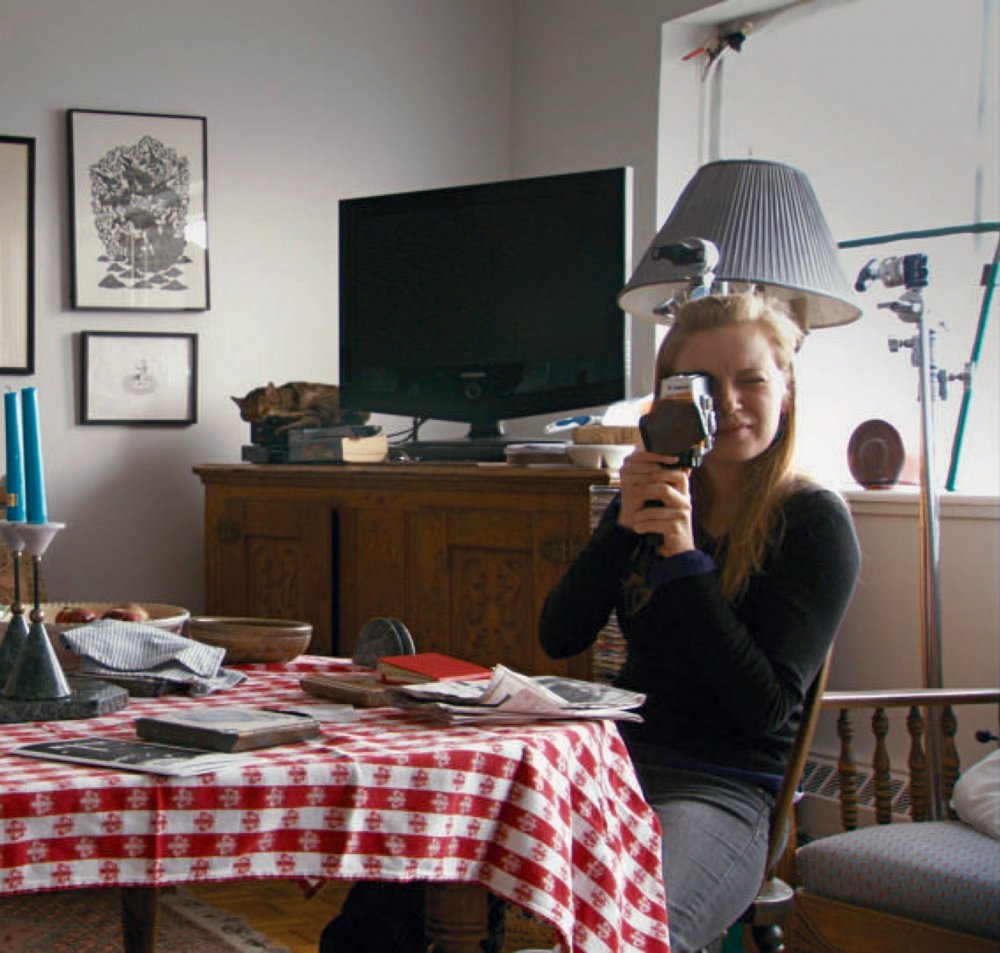
Stories We Tell (2012)
Courageous, affecting, original and sweet, Sarah Polley’s family portrait deserves its accolades and earns its moments of emotional complexity. Polley’s presence as “movie star” immediately complicates the tale of her heritage, and she rings that textual detail for all of its aesthetic worth. The key formal revelation is a subtle moment of commentary on the instinct to self-mythologise. But we care because her family is one of great storytellers and her father Michael’s dignified presence is what packs the most poignancy. This is filmmaking of great generosity and love.
7. 12 O’Clock Boys
Lofty Nathan, USA
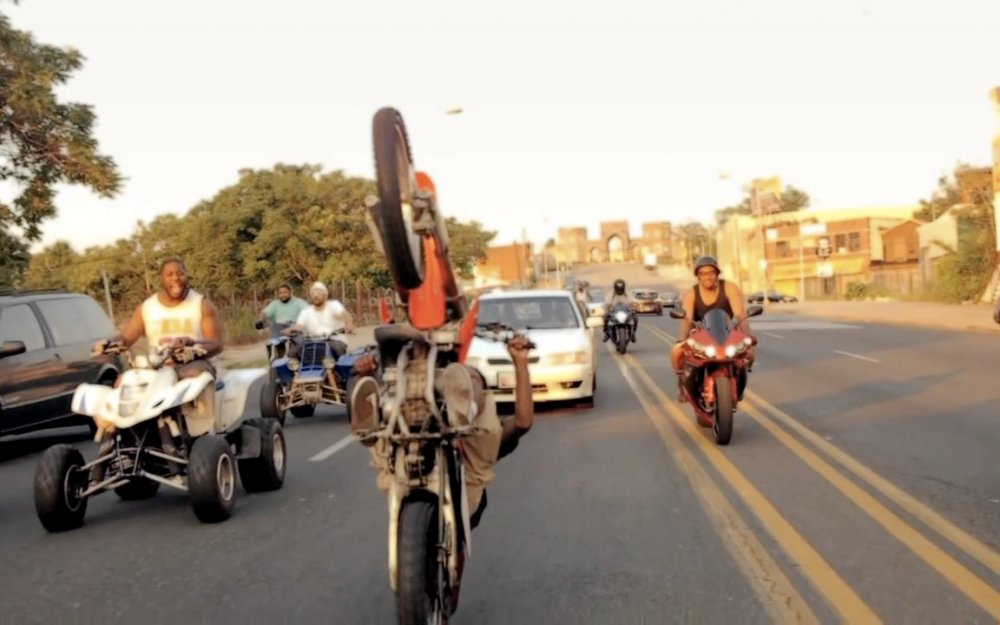
12 O'Clock Boys
Shaky with present-tense urgency, Lotfy Nathan’s frenetic, death-defying look at trick-bike urban dissidents in Baltimore, Maryland, and a young man named Pug who dreams of joining them, takes turns being exhilarating, suspenseful and sad, but remains the best nonfiction thrill-ride since Leviathan. With each glorious wheelie the tension mounts, but this isn’t simple subculture exploitation, and the family drama at the film’s core never demeans. Social rebellion is glorified unrepentantly, because the allure to danger is one of the most universal human emotions.
6. Museum Hours
Jem Cohen, Austria / USA

Museum Hours (2012)
At the Kunsthistorisches Museum in Vienna, a guard befriends a lost visitor, setting in motion a quietly moving story about art, the city and intersecting lives that finds mysterious power in minute observations and active, lived-in conversations. Apparently nonfiction images of the public engaging with masterworks of art hold a unique, transfixing power and the oblique intersection of fiction and documentary gently moves the film toward a self-aware sublimity. As enriching as a lovely talk with an old friend or an afternoon spent looking at great paintings, Jem Cohen’s film is a quiet marvel.
5. Sleepless Nights
(Layali Bala Noom) Eliane Raheb, United Arab Emirates / France / Lebanon / Palestine / Qatar
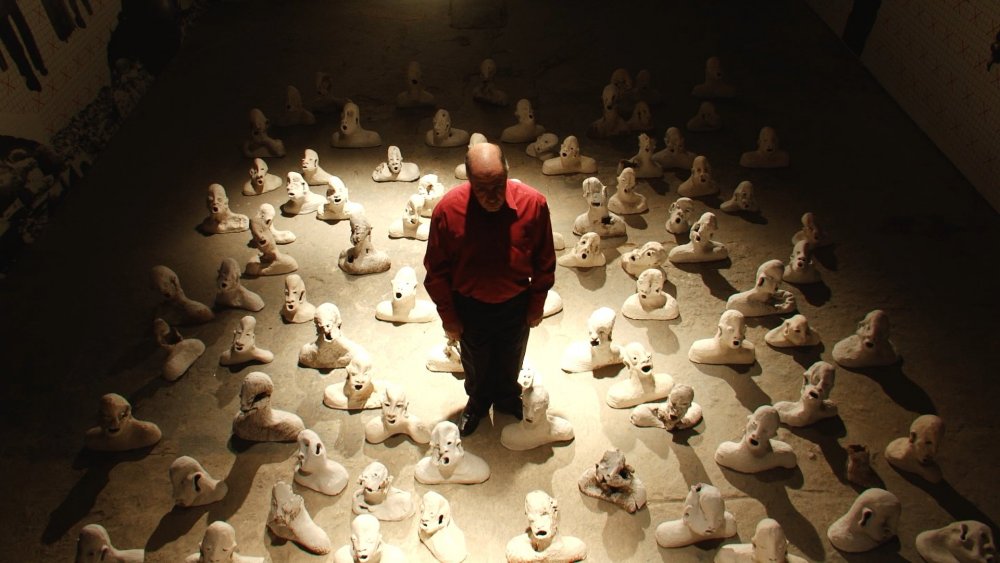
Sleepless Nights
Without that other film that features charismatic war criminals perceived as heroes, this complex, unforgettable Sleepless Nights might be most troubling film of the year. Still, it’s one of the 2013’s best, shockingly overlooked and under-programmed after a few festival screenings earlier in the year, including True/False. The film is dense, wrenching and fascinating, at once a feat of stunt cinema and deeply felt art-journalism. Its riddles continue to haunt and will for some time.
4. These Birds Walk
Omar Mullick / Bassam Tariq, Pakistan / USA
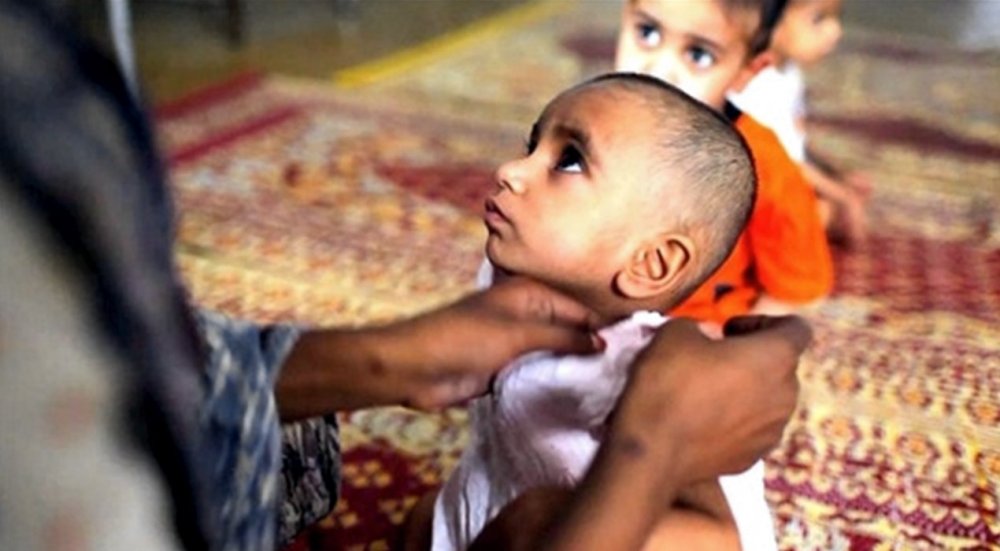
These Birds Walk
The humanitarian heart at the centre of this portrait of the community of children and young men surrounding the venerable Edhi Foundation in Karachi, Pakistan never obscures a pure, unfiltered love of cinema. From the dazzling opening scene through to the heartbreaking final images, directors Omar Mullick and Bassam Tariq are always relentlessly searching for moments of filmic clarity, sparks of light and energy that will transport their audience from passive viewers to active participants, proving that an engaged cinematic experience can open the world.
3. Massive Attack vs Adam Curtis
Adam Curtis, UK
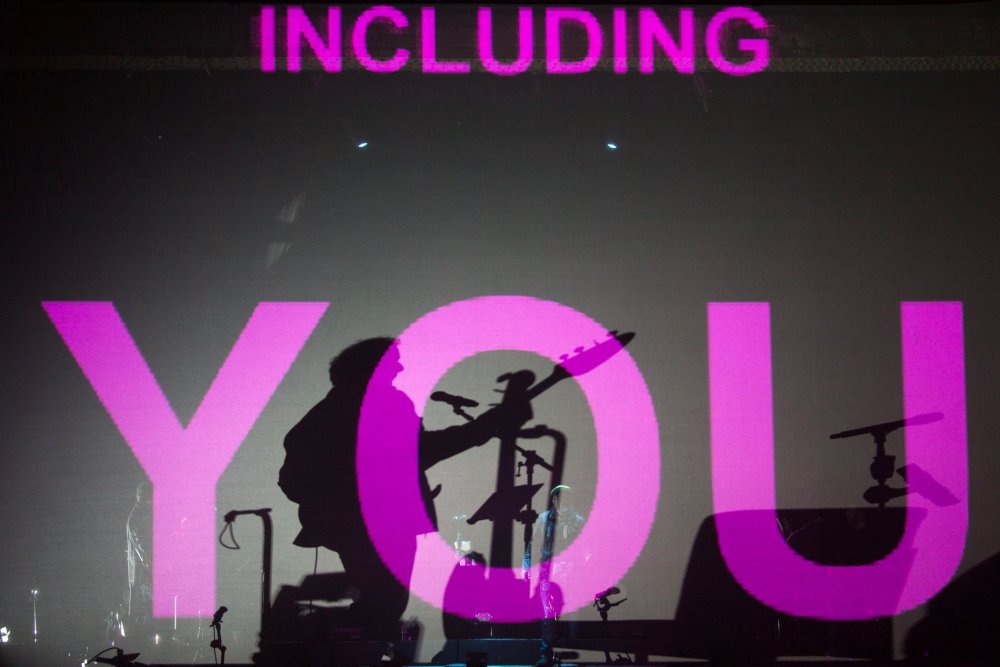
Massive Attack vs Adam Curtis
British documentary master Adam Curtis has been expanding his signature style in the last few years, starting with It Felt Like a Kiss in 2009, which made him an immersive gallery artist. Now, after his collaboration with Massive Attack, we have Adam Curtis, arena art superstar. The furious and potent political style remains, but his wry, affecting, montage take on our collective rumbling toward certain apocalypse gets bigger, more fun and even a little uplifting. An emotional, dazzling experiment in gig cinema that anyone lucky enough to see will never forget.
2. The Last Station
(La última estación) Cristian Soto / Catalina Vergara, Chile / Germany

The Last Station
A poem about dying that conjures the sad magic that great art about the end of life can sometimes accomplish, while also giving a clear-eyed observational look at the practical realities of a Chilean nursing home. Harrowing, delightful, transcendent and full of incredible captured moments, The Last Station is an unbearably moving cinematic achievement.
1. The Act of Killing
Joshua Oppenheimer, Denmark / Germany / Finland / UK / Netherlands / Norway / Poland / Sweden
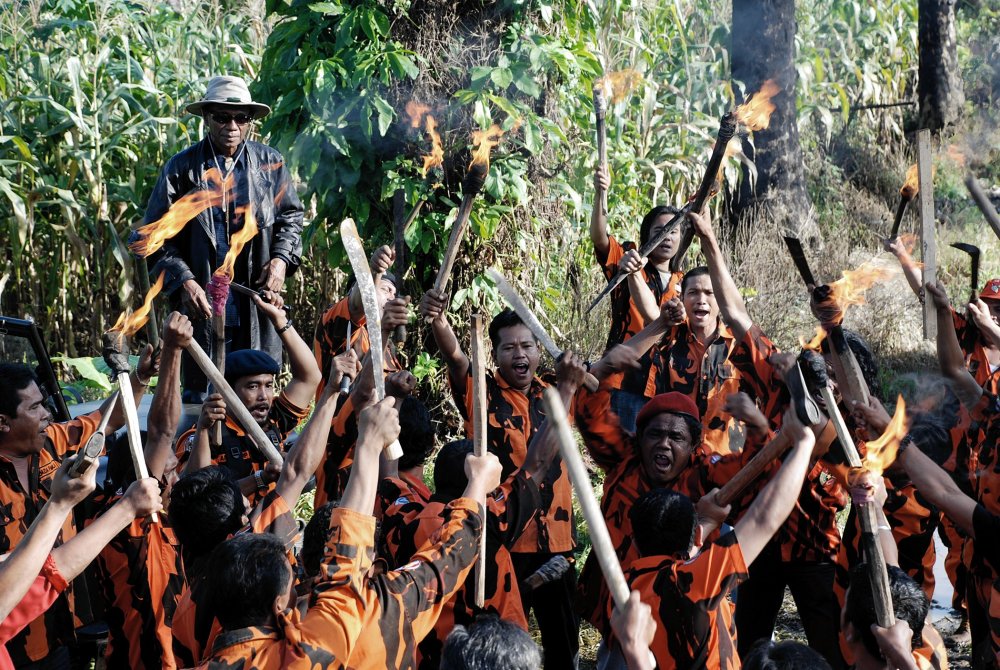
No need to get tricky here: The Act of Killing is a cataclysm of a film, destined to be picked at and debated for years, but a feat unlikely to be outdone. It reminds me of a nonfiction A Clockwork Orange, a movie so desperately troubling yet still able to make an impression with mainstream viewers.
The questions it raises about the mythologising power of images will haunt the cinema going forward. Like Leviathan, it is an absolute game-changer, elevating documentary form and laying waste to precious ideas of objectivity and subservience to journalism.
This is a movie of shattering moments, full of contradictions and darkness that refuses to be easily soluble. It’s also a forceful scream from the documentary ghetto. We are movies: hear us howl!
Special mentions
Aatsinki: the Story of Arctic Cowboys
Jessica Oreck, USA / Finland
Narco Cultura
Shaul Schwarz, USA / Mexico
Fuck for Forest
Michal Marzak, Germany / Poland
Garden of Eden
Ran Tal, Israel
The Missing Picture
(L’image manquante) Rithy Panh, Cambodia / France
Bending Steel
Dave Carroll, USA
The Naked Room
(El Cuarto Desnudo) Nuria Ibañez, Mexico
Remote Area Medical
Jeff Reichert / Farihah Zaman, USA
We Always Lie to Strangers
AJ Schnack / David Boone Wilson, USA
Pavilion
Tim Sutton, USA
Lenny Cooke
Ben Safdie / Joshua Safdie, USA
The Machine That Makes Everything Disappear
(Manqana, romelic kvelafers gaaqrobs) Tinatin Gurchiani, Georgia
Dear Valued Guests
Jarred Alterman / Paul Sturtz, USA
Tough Bond
Austin Peck / Anneliese Vandenberg, USA
Night Labor
David Redmon / Ashley Sabin, USA
Elena
Petra Costa, Brazil / USA
I Am Breathing
Emma Davie / Morag McKinnon, Denmark / Finland / UK
Northern Light
Nick Bentgen, USA
After Tiller
Martha Shane / Lana Wilson, USA
Hilton!
Virpi Suutari, Finland
Public Hearing
James N. Kienitz Wilkins, USA
To the Wolf
(Sto Lyko) Aran Hughes / Christina Koutsospyrou, Greece / France / UK
People’s Park
Libbie Dina Cohn / J.P. Sniadecki, USA
-
The Digital Edition and Archive quick link
Log in here to your digital edition and archive subscription, take a look at the packages on offer and buy a subscription.




